Insecticons | Secret Miniature Spy Drones Developed in the 1970s
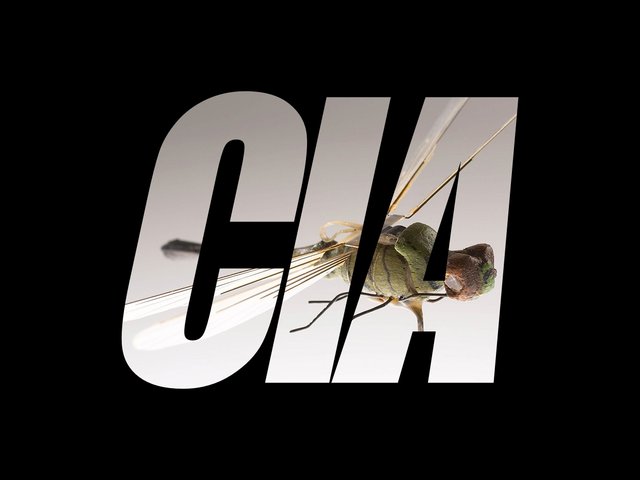
The Insectothopter
Several years ago, the CIA claimed it had created a functional insect-sized secret surveillance drone dating back decades. The agency went as far as producing and releasing a video to back up these assertions.
Considering the Agency regularly conducts propaganda campaigns, there was real reason for the average person to be sceptical of such claims as they border on science-fiction.
Compact personal drones are common place these days, so it wouldn't be too much of a stretch to think that government intel agencies were working on prototypes as far back as the 1970s, would it?
Turns out, they did create a tiny spy drone, or at least they developed a prototype. In late 2019, the first documented evidence of the secret INSECTOTHOPTER was quietly released through a FOIA request.
The original FOIA request itself was made on July 26th 2013!!!
It was submitted by John Greenwald Jr. of the Black Vault archive.
In a letter to Mr. Greenwald, the Agency acknowledged that several documents indeed existed, three files to be precise, and were being made available for the first time ultimately confirming their existence.
![]()
Declassified Documentation
PDF document: https://documents2.theblackvault.com/documents/cia/insectothopter-cia1.pdf
Description
- Insect-like design with wings
- Runs on tiny gasoline motor
- Laser guided "ROME" system used for command
- Cruising speed of 15 FPS
- Ideal for winds below 10 FPS
- Empty weight - 0.4g
- Gross weight - 0.8g - with wing flapping propulsion
- Gross weight - 1.0g - with jet propulsion
- Fitted with audio recording device
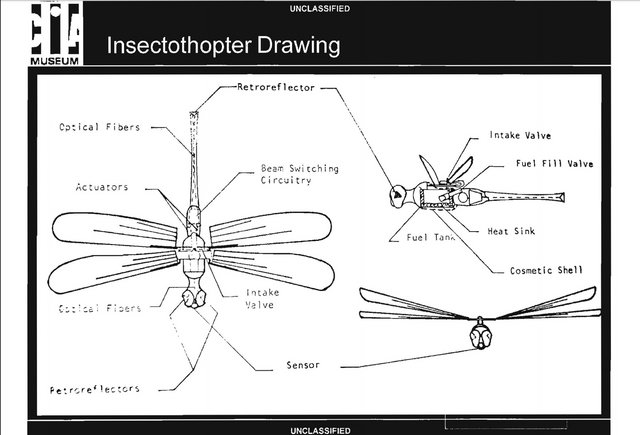

This vehicle is a fluttering wing, miniature drone, which has limited flight characteristics. The design is intended to be insect-like in appearance when casually observed.
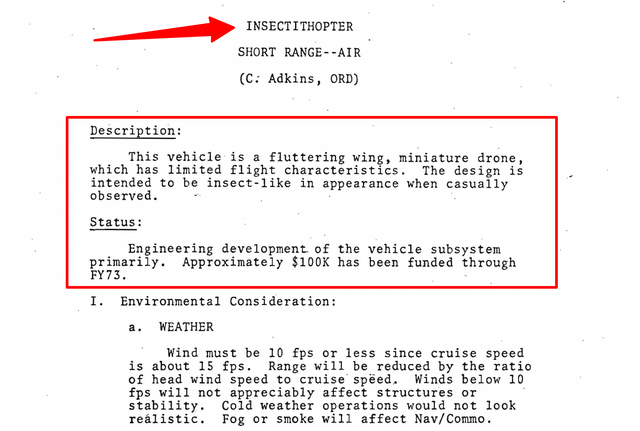
Purpose
- Short range spy drone
- Intel gathering
- Surveillance
- Audio recordings
- 1 aim to reach "windowsills" and pass over "embassy walls"
The objective of the project:
To provide a clandestine insectlike (dragonfly) vehicle capable of being directed to a specific target at least 100 meters distant for the purpose of emplacing an audio surveillance device (optical microphone).
Cost of Research and Development
- Estimated $40,000 USD
- Actual $100,000 USD

Range
- Short range
- Approximately 200m
Endurance
- 60 Seconds
Launch and Recovery
- From rented space through window or roof or from auto, etc.
Geographic Coverage
- Any place or time of year indigenous to insect.
Targets
- Any line-of-sight target within 200 meters of launch.
Stealth
High concentration of people and man-made objects. Detection is improbable at distances of larger than several feet as being anything other than an insect.

Evaluation of Project and Contractor
Technically, the project must be evaluated as excellent. However, there appears to be a decreasing lack of support from potential users, and the additional research funds required to meet the final intelligence objective is larger than expected.
"Technical Success"
"Feasibility Established"

Engineers and Developers
The scientists and engineers who helped create the insectothopter had previously worked on early prototypes of UAVs developing autopilot systems. Some projects included creating model airplanes, bird-like wing flapping contraptions and even working with carrier pigeons fitted with small cameras and microphones.
Pages of the documents detailing the use of UAVs in regards to the "Cuban Scenario" are almost completely redacted. We can only assume that several varieties of drones were developed and put into practice in the field.
Implications
Discovering that the CIA had successfully developed functional mini-drones back in the 1970s is quite surprising. It also suggests that there are likely highly advanced drones presently in existence that we haven't the slightest incling of. A disturbing thought as these early versions of drones seem tame compared with the Predator and Reaper drones regularly used in military combat operations at present.
Lethal Miniature Aerial Munitions Systems - Flying Grenades

military.com
An example of some contemporary UAVs models far in advance of its 'dragonfly' like predecessors are weaponized drones like the so-called "flying grenades". This is how one high-tech publication gushed over the new prototypes known as Lethal Miniature Aerial Munition Systems.
Don’t call it a drone. Sure, it looks just like a small unmanned aerial vehicle — right down to the little wings and the cameras. And yes, it’s remotely flown. But the Lethal Miniature Aerial Munition System is more like a tiny, flying grenade. The 5.5-pound device contains just enough explosive material — a little more than a shotgun shell’s worth of tungsten pieces — to make a single target’s day unpleasant in a way no small drone can.
The REF has sent 44 of the munitions over to Afghanistan, according the Army’s Heather Gleason. None have been used to attack militants yet (the lone attempt was scotched because of a dud warhead). But that could change very soon. The LMAMS can be launched in less than two minutes, as opposed to the 20 or 30 minutes it ordinarily takes to call in mortars or artillery rounds. The quick turnaround time — plus a range of up to six miles, a speed of up to 85 knots, a proximity fuze, and directional blast radius of just a few feet — should make it a rather interesting option for a platoon or a squad in the middle of an Afghan firefight. It might not be mistaken for a drone for very long.
Brookings.edu
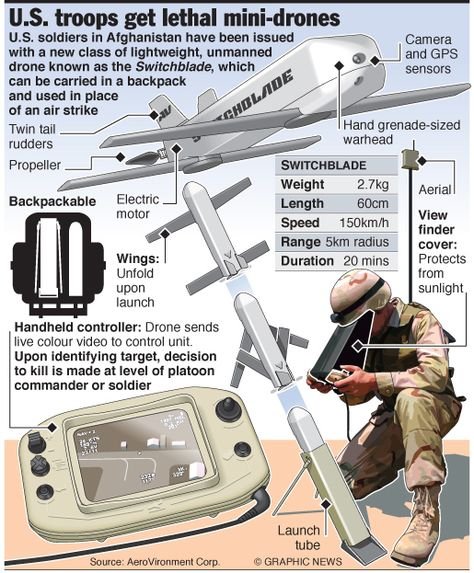
Leave it to DC think tank the Brookings Institute to excitedly cheer on the deployment of killer suicide drones to make a person's day 'unpleasant'.
If these are the drones that are public knowledge, we can only imagine what's currently being produced in the shadows.
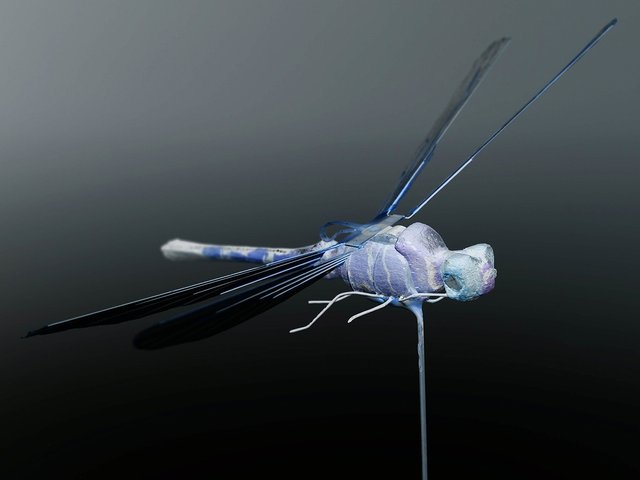


Just wow!!!